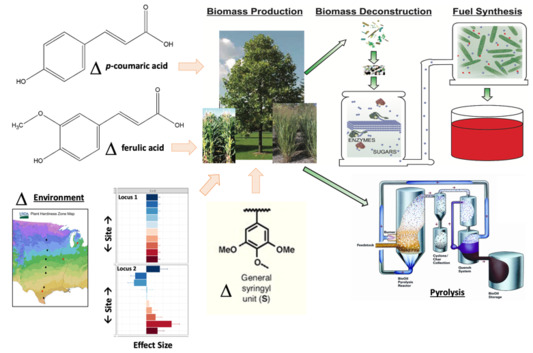第263回定例オープンセミナー
How genes and growth conditions alter grass biomass for biochemical and thermal biofuel processing
| 開催日時 | 2020(令和2)年11月25日(水) 12:30–13:20 |
|---|---|
| 開催場所 | 総合研究実験1号棟5階 HW525・オンライン(Zoom) |
| 発表者 | Laura Bartley, Ph.D. (Associate Professor, Washington State University/2019–2020 Visiting Associate Professor, RISH, Kyoto University) |
| 関連ミッション |
ミッション5-2 脱化石資源の構築 |
聴講希望の方は、ご所属、お名前、連絡先等記してメールにてお問い合わせください。
オープンセミナー事務局: rish-center_events@rish.kyoto-u.ac.jp
開催日当日午前10時までにご連絡ください。
要旨
Biomass from terrestrial plants, mostly consisting of cell walls, can be converted into fuels and chemicals to reduce fossil fuel dependence. Both biochemical and thermochemical biofuel conversion processes can be made more efficient by optimizing biomass composition. In a first example, we have identified acyltransferase enzymes responsible for incorporating phenolic acids into grass cell walls. Increasing acyltransferase expression changes cell wall composition and in some cases improves accessibility of cellulose for breakdown to sugars to be fermented into fuels by microbes. In another example, we have found that transgenic manipulation of switchgrass cell walls to reduce phenolic acids and syringyl lignin, improves thermal fractionation of switchgrass during fast pyrolysis. In a third example, we are examining natural variation of switchgrass biomass composition as induced both by genetic variation and growth location. Across ten sites representing 14 degrees of latitude, biomass composition varies significantly, but without a simple latitudinal pattern. We found 121 genomic regions (quantitative trait loci, QTL) that control forage/digestibility compositional traits. Of particular interest for biofuel production, about 40 % of the QTL have consistent effects across all sites; whereas, the remaining QTL vary, in some sites having no effect or even antagonistic effects depending on sites. The results inform strategies to optimize biomass composition for particular conversion platforms across plant growth ranges.
 Fig. 1 Strategies to improve biomass for biochemical biofuel production (top) or thermochemical biofuel production (bottom) by changing (Δ) phenolic acids, lignin monomer ratios, and understanding environmental effects on composition.
Fig. 1 Strategies to improve biomass for biochemical biofuel production (top) or thermochemical biofuel production (bottom) by changing (Δ) phenolic acids, lignin monomer ratios, and understanding environmental effects on composition.
印刷用PDFファイル(163 978 バイト) | ページ先頭へもどる
2020年11月17日作成
